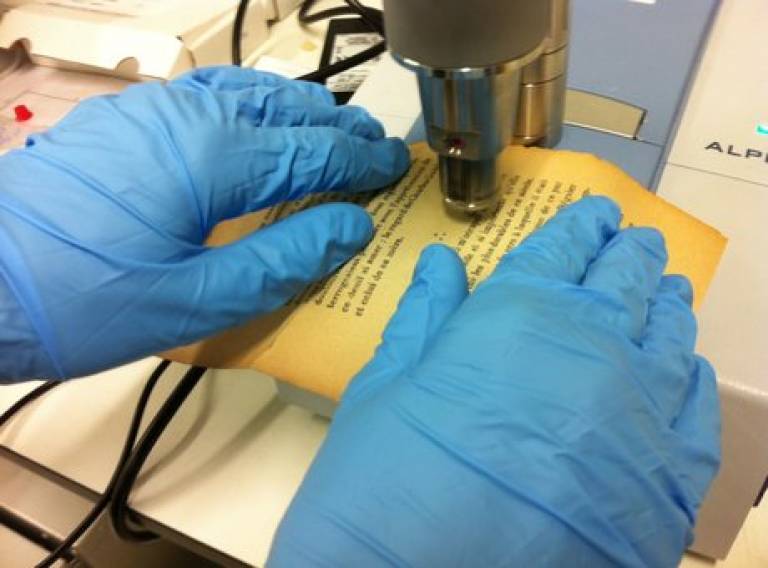Characterisation of historic plastics using terahertz timedomain spectroscopy and pulsed imaging

1 May 2012
Terahertz (THz) time-domain spectroscopy and 3D THz pulsed imaging have been explored with regard to polymer materials, both commodity and historic polymers. A systematic spectroscopic study of a wide range of different polymer materials showed significant differences in their spectra. Polyolefins and polystyrenes generally exhibit lower absorption than other examined polymers, various cellulose derivates, poly(vinyl chloride), poly(methyl methacrylate), polyamide, hard rubber and phenol formaldehyde resin, the last of these exhibiting the most intense absorption over the entire range, 0.15-4.2 THz. It was also examined how the presence of plasticisers in poly(vinyl chloride), the presence of fillers in polypropylene, and the degree of branching in polyethylene and polystyrene affect the spectra; inorganic fillers in polypropylene affected the absorption most. With 3D THz pulsed imaging, features in polymer objects were explored, appearing either as integral parts of the material (coatings and pores in foams) or as a consequence of physical deterioration (cracks, delamination). All of these features of various complexities can be successfully imaged in 3D. Terahertz technology is thus shown to have significant potential for both chemical and structural characterisation of polymers, which will be of interest to heritage science, but also to the polymer industry and development of analytical technologies in general. © Springer-Verlag 2012.
Characterisation of historic plastics using terahertz timedomain spectroscopy and pulsed imaging. Analytical and Bioanalytical Chemistry, 403 (5), 1405-1414.
Pastorelli, G., Strlic, M., Trafela, T., Taday, P.F., Portieri, A., Lowe, D., Fukunaga, K. (2012)
The full text of this article is not available through UCL Discovery.
 Close
Close

